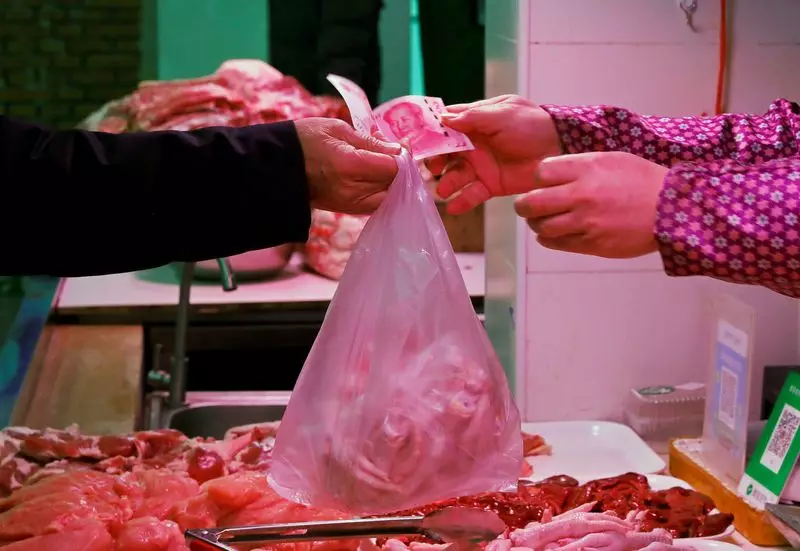China is facing significant economic challenges in 2024, as indicated by the recent data released by the National Bureau of Statistics. The consumer price index (CPI) exhibited a minimal increase, with a full-year rise of only 0.2%. This sluggish consumer inflation, which is consistent with the previous year’s figures, starkly contrasts with the government’s target of approximately 3%. Such a performance marks the failure to meet annual inflation objectives for the 13th consecutive year, raising concerns about the health of the Chinese economy. This article delves into the contributing factors behind this disappointing inflation data and the implications for consumers and policymakers alike.
A myriad of elements is influencing China’s meager inflation rates. Chief among them is a persistent sense of job insecurity among consumers, together with a continuing downturn in the housing market. The threat of tariff disputes with the newly inaugurated U.S. administration also plays a role in shaping executive decision-making and consumer confidence. Despite China’s attempts to stimulate the economy through various fiscal policies, the underlying demand remains weak, suggesting that current measures are insufficient in generating the desired momentum.
The marginal uptick of 0.1% in the consumer price index for December illustrates the sluggish consumer sentiment; this growth is a deceleration from November’s 0.2% increase and reflects a broader trend of weak domestic consumption. Core inflation, which excludes fluctuating food and energy prices, rose slightly to 0.4%—the highest rate in five months—indicating that although some sectors show signs of resilience, widespread deflationary pressures persist.
While consumer prices are barely moving, factory-gate prices remain in a deflationary spiral, with the producer price index (PPI) declining by 2.3% year-on-year in December. This represents the 27th month of ongoing deflation in the manufacturing sector, showcasing a problematic landscape for producers. The slight easing in the pace of factory deflation from November’s 2.5% drop offers a glimmer of hope; however, it suggests a fragile situation where prices continue to decline due to inadequate demand.
Such persistent deflation brings additional difficulties to policymakers. As Julian Evans-Pritchard, Head of China Economics, remarked, there are signs that policy stimulus may be temporarily propping up demand and prices. Nevertheless, he cautioned that these effects are likely to wane over time, inhibiting any sustainable recovery in inflation rates.
In this climate of cautious consumer behavior, individuals are increasingly opting for alternatives like renting rather than purchasing. This shift in purchasing habits extends to various sectors, including luxury goods such as cameras and high-end fashion items. The trend is not only indicative of the prevailing economic uncertainty but also signals a fundamental change in consumer priorities.
Moreover, the market is witnessing aggressive price competition, particularly in the electric vehicle sector, which has entered its third year of price wars. Retail nationwide has seen price cuts across a broader range of goods, from luxury items to everyday consumables like bubble tea. Such discounting strategies reflect the increased pressure on businesses to maintain sales volumes in the face of waning consumer confidence.
Proactively addressing these economic woes appears essential for China moving forward. The World Bank has made a cautious adjustment to China’s economic growth forecast for 2024 and 2025. However, factors like weak household sentiment and challenges in the property market are expected to continue restricting economic vitality. The Chinese government is stepping up its fiscal stimulus efforts, which includes a notable commitment of $411 billion in special treasury bond insurance aimed at bolstering investment and consumption.
To truly invigorate the economy, a multifaceted strategy that not only focuses on stimulus funding but also addresses intrinsic consumer anxieties and enhances public confidence will be necessary. By ensuring fiscal policies effectively engage household spending and business investment, China stands a better chance of navigating the delicate balance between stimulating growth and controlling inflation.
The Chinese economy finds itself at a crossroads, with low inflation and deflationary pressures converging in an atmosphere laden with uncertainty. The path ahead requires innovative solutions to stimulate demand and restore consumer confidence to foster a healthier economic environment.

